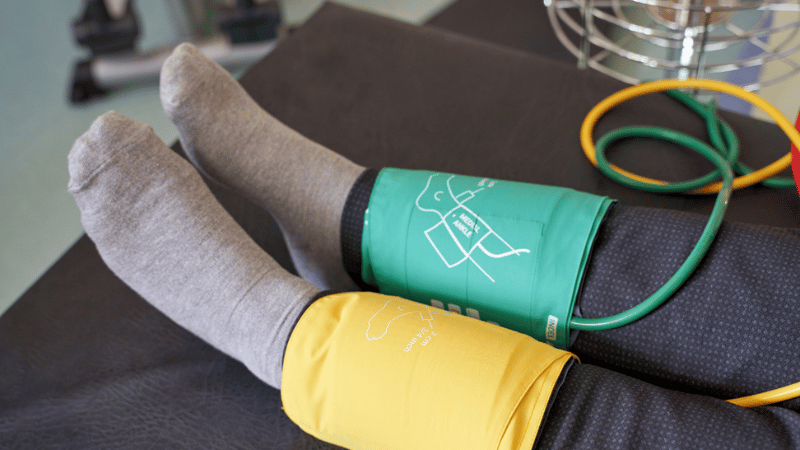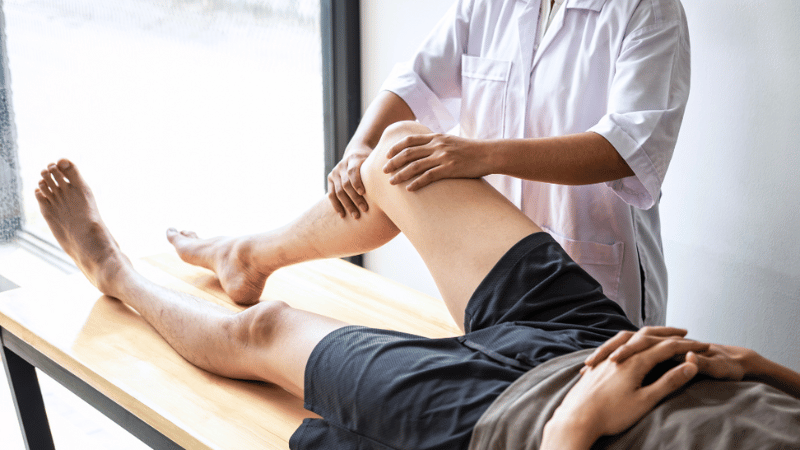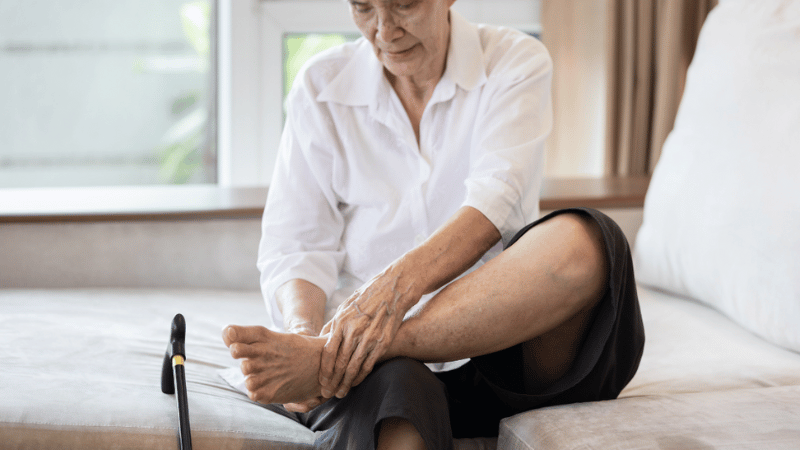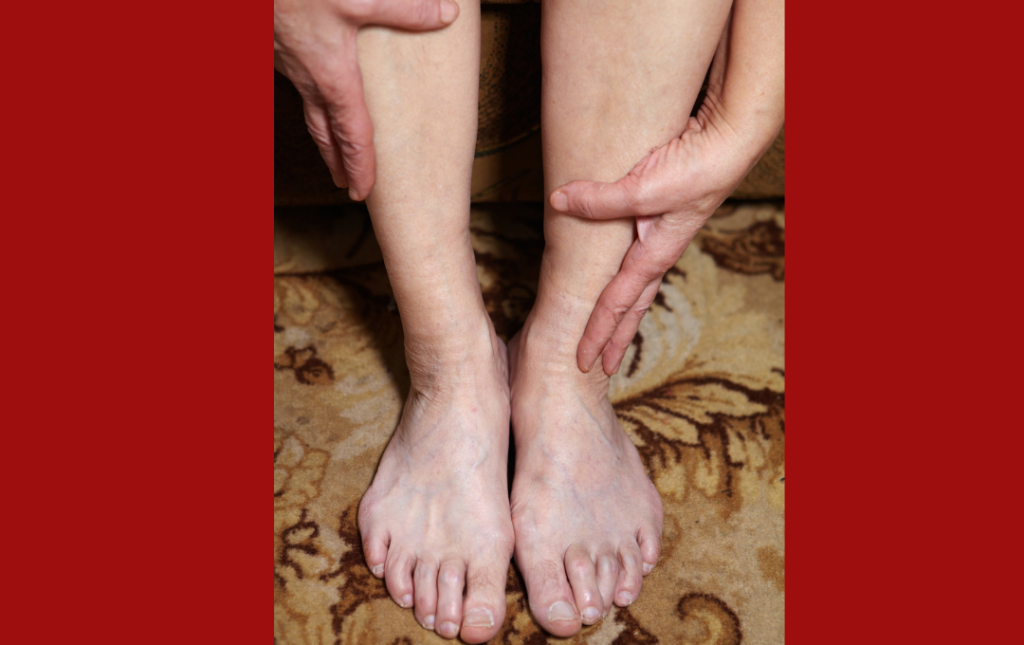Hair loss for men and women at any age can be quite worrisome. For most people, hair loss is quite natural as new strands keep growing as the old ones break off from the roots and fall out. This is known as natural regrowth. However, if you start noticing unusual hair loss on different parts of the body, it might be due to a serious medical condition.
Certain hereditary, autoimmune disorders like alopecia areata or vascular conditions like PAD may cause hair loss on the legs.If you have any of these medical issues, your leg hair either starts to grow slower or falls off completely.
Even without detectable symptoms, you may have developed a condition known as peripheral artery disease (PAD), which most commonly impacts the arteries in the legs. With PAD, the arteries become hardened when plaque attaches to the artery walls, narrowing the passageway. This plaque buildup is known as atherosclerosis, and it inhibits blood flow to your legs.
Most people do not notice symptoms of PAD until atherosclerosis is advanced, causing significantly restricted blood flow to the legs, feet, and ankles. Because the lower extremities lack adequate amounts of oxygen-rich blood, they cannot function as they should. This is when you’ll notice signs like toenails that grow slowly, wounds that take longer than usual to heal, and hair loss on your lower legs.
Although some people may not view losing hair on the legs, shins, or calves as a problem, it is important to know that it may indicate a larger health issue.
TAKE THE ONLINE PAD RISK ASSESSMENT
Here’s everything you need to know about hair loss on legs and how it’s one of the more noticeable symptoms of PAD.
What Can Cause You to Start Losing Hair on the Legs?
As people age, they may lose hair on their legs for a variety of reasons. Hair loss can occur on your legs just as it can on your head, and, similarly, genetics can play a role in this issue. If baldness runs in the family, you could also experience hair loss on other parts of your body, such as your legs. This rings true for both men and women.
Some hair loss conditions, such as alopecia areata, are caused by a faulty immune system. With alopecia areata, for example, the immune system confuses hair cells as foreign invaders and attacks them. Hair loss of the legs is called anterolateral leg alopecia. This condition isn’t caused by one particular health issue, instead, it is a catchall term for any sort of hair loss on the legs. For example, PAD can cause anterolateral leg alopecia, as can genetics and rubbing the legs together too often.
Besides PAD, other conditions that may lead to hair loss on your lower legs include:
- Diabetes
- Poor Circulation
- Thyroid Conditions
- Fungal Infection
- Folliculitis in Severe Stages
- Hormone Changes
- Pituitary Gland Disorders
You can also suffer from hair loss if your body is deficient in certain nutrients, such as iron, vitamin D, or zinc. Steroid use can lead to loss of hair on the legs for males and sometimes females. Since the causes of leg hair loss are so numerous, it’s important to take all your symptoms into account to get an accurate diagnosis. If you have other signs of PAD, you should seek out further evaluation from a medical professional.
Health Factors That Can Cause Hair Loss on the Legs
There are many reasons why you may be experiencing hair loss on the legs. Some of the biggest health factors include high blood pressure, high cholesterol, and diabetes.
High blood pressure, cholesterol, or damaged blood vessels can inflame your arteries. Over time, this can lead to losing hair on the legs, shiny skin, and other common symptoms of PAD.
The best way to reduce hair loss on the legs is to manage your cholesterol and blood pressure levels. This will ensure that your hair follicles are receiving an adequate amount of nutrients and oxygen.
Diabetes can also cause hair loss on the legs. When blood sugar is high, blood vessels can become damaged, and fatty deposits of plaque can build up, especially in the legs. This condition, known as peripheral artery disease (PAD), significantly interferes with blood flow to the extremities.
If you have diabetes or other health conditions and are experiencing symptoms of PAD, we recommend consulting with a vascular specialist. A vascular specialist will either schedule you for an angiogram or an ankle-brachial index (ABI) test to determine if you have peripheral artery disease.
How Does PAD Cause Hair Loss on the Legs?
Hair follicles require nutrients to keep them healthy and to allow your hair to grow. Those nutrients are carried through the bloodstream. When people have PAD, their arteries are narrowed by plaque buildup. This makes it difficult for adequate blood and oxygen to provide nourishment to the muscles, tissue, and other parts of the leg, including the hair follicles.
When the hair follicles don’t receive enough nutrition, the hair will stop growing. You may notice patches of hair loss on the legs. This may coincide with other symptoms, such as leg pain or numbness in the legs.
PAD is a progressive disease that can start with mild symptoms or none at all. Early detection and diagnosis of symptoms like leg pain and hair loss on the legs can help prevent the progression of the disease.
If you have any PAD risk factors, such as diabetes, high cholesterol, high blood pressure, or smoke, make sure to tell your physician or a vascular doctor about these risk factors. You should also tell your doctor whether or not you are experiencing additional symptoms of PAD, such as slowed toenail growth, skin discoloration, and cramping in the legs while walking or jogging. These can all signal a lack of adequate blood flow to your legs.
Other Common Symptoms of Peripheral Artery Disease
If you notice your leg hair stopped growing and feel you may be at risk for PAD, there are other PAD symptoms you’ll want to be aware of. These include:
- Trouble walking up or down stairs
- Constant leg pain that only goes away when you elevate your feet
- Wounds on your legs that won’t heal or are slow to heal
- Leg restlessness, fatigue, or heaviness
- Cramping in your thigh, calf, or buttocks
- Dry skin or discoloration
- Numbness in your legs, ankles, feet, or toes
These are early indicators that you may have peripheral artery disease. If you’re experiencing one or more of these symptoms combined with hair loss on your legs, you’ll want to consult a vascular specialist to create a treatment plan. PAD is a serious illness that can lead to potential health issues if it’s not caught early.
Prevalence of Hair Loss on Legs for Men and Women
Both men and women can experience anterolateral leg alopecia, which may be a sign of PAD. This PAD symptom shows sharply defined and symmetrical hair loss patterns on legs and appears to be more prevalent in men as compared to women.
As many as 35% of men are thought to develop anterolateral leg alopecia over their lifetime. In most cases, hair loss occurs on the anterior and lateral parts of the lower legs. People who are affected by this condition may find themselves asking, “Why am I losing hair on my lower legs?” They may reach out to a dermatologist, believing that losing hair on the calves could be a skin-related issue.
This could be the case, but it’s important to check for PAD if you are experiencing similar symptoms regardless of your gender. Recent studies indicate that unlike the PAD symptom of anterolateral leg alopecia, peripheral artery disease affects women as often as men.
Diagnosing Hair Loss on Shins, Calves, and Feet

If you see your primary care physician due to hair loss on the lower legs, you may be referred to a vascular doctor for additional testing to diagnose or rule out peripheral artery disease. At USA Vascular Centers, our trusted vascular doctors can conduct two tests to determine if your hair loss could be caused by PAD.
An ankle-brachial index (ABI) test measures the blood pressure in your ankle and the blood pressure in your arm and then compares the two. Our vascular doctors are experts at diagnosing PAD, and they will be able to tell whether or not the test indicates restricted blood flow in your peripheral arteries.
Or, one of our doctors may choose to conduct an angiogram. During this minimally invasive procedure, contrast dye is injected into the veins to locate blockages in the arteries. Before your appointment, it can be helpful to write down a list of symptoms you’re experiencing and the medications you’re taking so that you are prepared for the visit. Wear comfortable clothing and drink plenty of water beforehand.
Leg Hair Loss Regrowth
If your hair loss on the legs is unrelated to PAD, you may find that your hair grows back after the recommended treatment for your condition. For hair loss caused by atherosclerosis (which is the hardening of the arteries) or PAD, undergoing an angioplasty, atherectomy, or stent placement may increase the blood flow in your legs. This, in turn, can result in the regrowth of hair on your legs, but it also may not. If you have further questions about hair regrowth after treatment, consult one of our vascular doctors.
At USA Vascular Centers, we offer several treatment plans for PAD, including peripheral angioplasty, stent placement, and atherctomy. When you meet with one of our vascular specialists, they’ll build a treatment plan that aligns with your needs.
Schedule a Consultation at USA Vascular Centers Today
If you have noticed your leg hair stopped growing or you’re losing hair on legs, our vascular specialists are here to help. We’re committed to answering your questions and improving your quality of life. Give us a call at 888.773.2193 or schedule a consultation with our leading vascular specialists who can determine if vascular treatment is right for you.
Frequently Asked Questions About Hair Loss on Legs
Why did my hair leg stop growing?
Losing hair on the legs is a common symptom of peripheral artery disease (PAD). However, there are other reasons why you may experience leg hair loss. Some common reasons include nutritional deficiencies, aging, hormonal fluctuations, or high levels of stress. If you aren’t sure what is causing you to lose hair on your legs, we recommend speaking with one of our vascular specialists to determine if it’s PAD or not.
What are the other warning signs of Peripheral Artery Disease (PAD)?
Leg hair loss is only one common symptom of PAD. Other symptoms include numbness, shiny skin, brittle nails, or changes in skin color. PAD is a serious health condition. If you’re exhibiting one or many of these symptoms, we recommend speaking to a vascular specialist.
Is it normal to lose hair on your legs?
Losing hair on the legs is typically a sign of an underlying health condition. However, slow hair loss can also be caused by aging or genetics.
Can poor circulation lead to hair loss on my legs?
Yes, poor circulation can lead to leg hair loss. Inadequate blood flow means your hair follicles aren’t receiving the nutrients and oxygen they need for proper hair growth.
Is leg hair loss in females more common than hair loss in males?
Both men and women are both at equal risk for hair loss on the legs. Peripheral artery disease is common among men and women and becomes more prevalent as you age.
What is anterolateral leg alopecia?
This type of hair loss occurs on the inside and outside sides of the lower legs. It can be caused by friction, genetics, aging, as well as other serious medical conditions like PAD.
Reviewed by Dr. Aaron Shiloh, a board-certified interventional radiologist with decades of experience performing minimally invasive treatment for PAD and other vascular conditions. Dr. Shiloh was awarded a fellowship from the Society of Interventional Radiology, a prestigious distinction that only the top 10% of doctors in his field have earned.
Citations
[1] Siah Wei, Tee, and Matthew J. Harries. “Anterolateral Leg Alopecia: Common but Commonly Ignored.” International Journal of Trichology, Hair Research Society of India, April-June 2014, https://www.ncbi.nlm.nih.gov/pmc/articles/PMC4154156/. Accessed 22 January 2022.
[2] Schramm, Kristofer, and Paul J. Rochon. “Gender Differences in Peripheral Vascular Disease.” Seminars in Interventional Radiology, Thieme Medical Publishers, March 2018, https://www.ncbi.nlm.nih.gov/pmc/articles/PMC5886764/. Accessed 23 January 2022.



